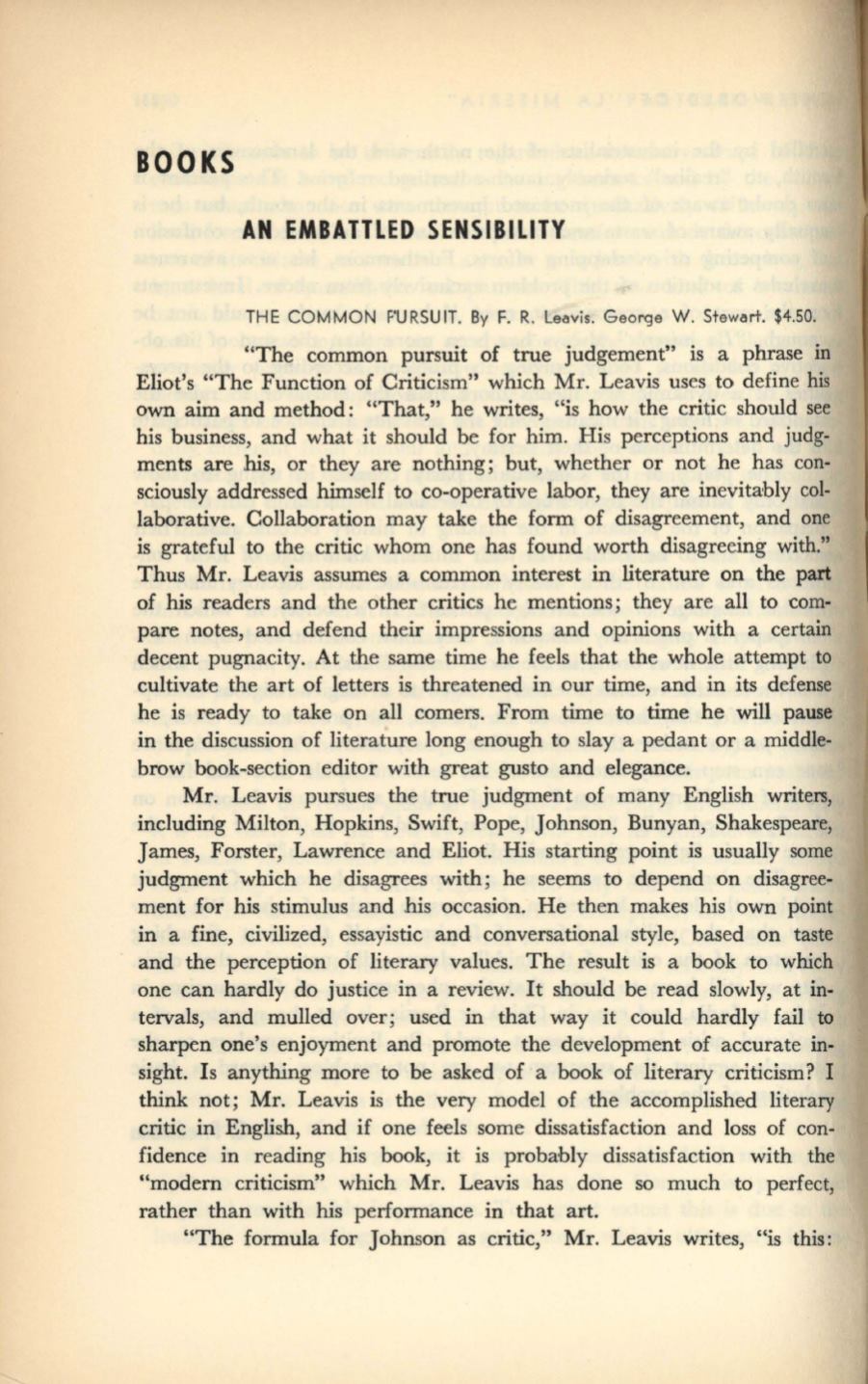
BOOKS
AN EMBATTLED SENSIBILITY
THE COMMON FURSUIT.
By
F. R. Leovis. George W. Stewort. $4.50.
"The common pursuit of true judgement" is a phrase in
Eliot's "The Function of Criticism" which Mr. Leavis uses to define his
own aim and method: "That," he writes, "is how the critic should see
his business, and what it should be for him. His perceptions and judg–
ments are his, or they are nothing; but, whether or not he has con–
sciously addressed himself to co-operative labor, they are inevitably col–
laborative. Collaboration may take the form of disagreement, and one
is grateful to the critic whom one has found worth disagreeing with."
Thus Mr. Leavis assumes a common interest in literature on the part
of his readers and the other critics he mentions; they are all to com–
pare notes, and defend their impressions and opinions with a certain
decent pugnacity. At the same time he feels that the whole attempt to
cultivate the art of letters is threatened in our time, and in its defense
he is ready to take on all comers. From time to time he will pause
in the discussion of literature long enough to slay a pedant or a middle–
brow book-section editor with great gusto and elegance.
Mr. Leavis pursues the true judgment of many English writers,
including Milton, Hopkins, Swift, Pope, Johnson, Bunyan, Shakespeare,
James, Forster, Lawrence and Eliot. His starting point is usually some
judgment which he disagrees with; he seems to depend on disagree–
ment for his stimulus and his occasion. He then makes his own point
in a fine, civilized, essayistic and conversational style, based on taste
and the perception of literary values. The result is a book to which
one can hardly do justice in a review. It should be read slowly, at in–
tervals, and mulled over; used in that way it could hardly fail to
sharpen one's enjoyment and promote the development of accurate
in–
sight. Is anything more to be asked of a book of literary criticism? I
think not; Mr. Leavis is the very model of the accomplished literary
critic in English, and if one feels some dissatisfaction and loss of con–
fidence in reading his book, it is probably dissatisfaction with the
"modem criticism" which Mr. Leavis has done so much to perfect,
rather than with his performance in that art.
"The formula for Johnson as critic," Mr. Leavis writes, "is this:


